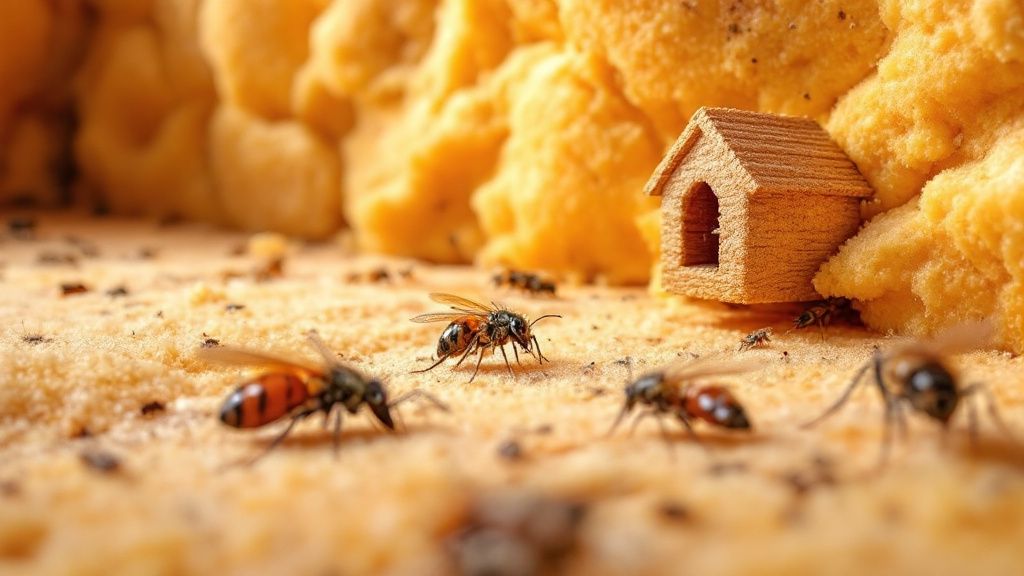Pest resistant insulation presents a cutting-edge approach to safeguarding your home from unwanted critters. You may find innovative solutions that leverage technologies like treated foam boards and encapsulated insulation to deter pests naturally. As pests can compromise your home’s comfort and safety, utilizing advanced insulation not only provides energy efficiency but also acts as a formidable barrier against infestations. You’re looking at options that are sustainable, contributing towards a healthier environment by reducing the need for chemical repellents. These insulation solutions are designed to fit seamlessly into various parts of your home, ensuring comprehensive protection and peace of mind for you and your family.
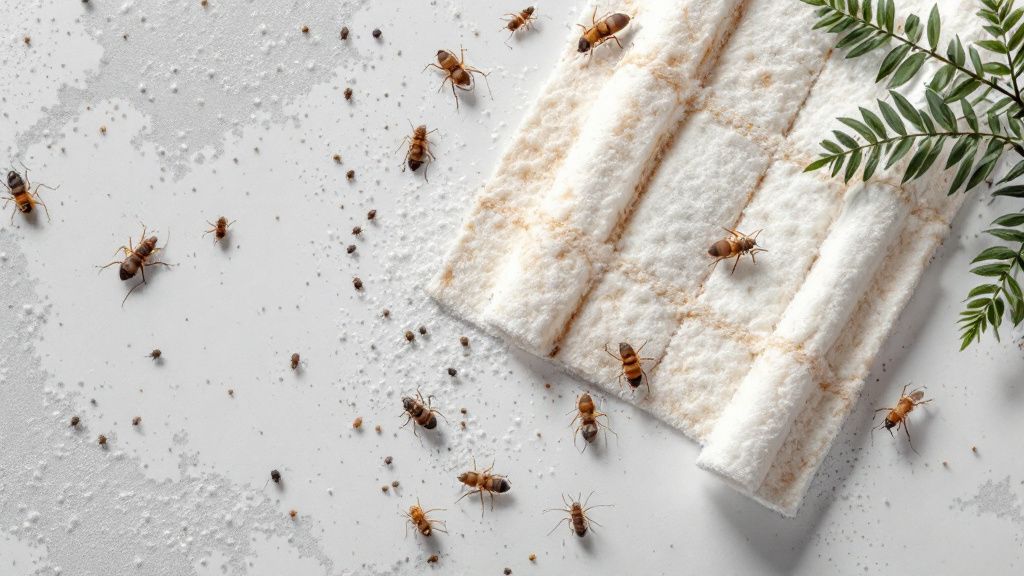
Understanding Pest-Resistant Insulation
Pest-resistant insulation is a strategic home improvement choice, focusing on materials and techniques that inherently deter pests without harmful chemicals. This type of insulation works through its dense composition and specialized treatments, forming an environment that is unattractive or inaccessible to rodents and insects. By understanding its long-term benefits, you can make informed decisions about safeguarding your home’s integrity and comfort.
A closer examination of GreenGuard Insulation’s experience with pest-resistant insulation showcases its efficacy in real-world applications. They used proprietary treatments that proved to reduce pest entry by approximately 80%, according to data from their client case studies. This success story underlines the potential advantages of adopting similar insulation solutions in your home.
Another critical aspect is the cost-effectiveness of pest-resistant insulation. Though the initial investment may seem higher, the reduction in pest control costs and damage repairs makes it a financially savvy choice. You can enjoy lower maintenance expenses and enhanced property value over time, making this insulation a practical addition to your home improvement strategy.
By exploring the properties and options of pest-resistant insulation, you gain an in-depth understanding of how it can protect your home. This green form of insulation promises to enhance energy efficiency while maintaining a healthy living space, ensuring that your home remains safe and pest-free.
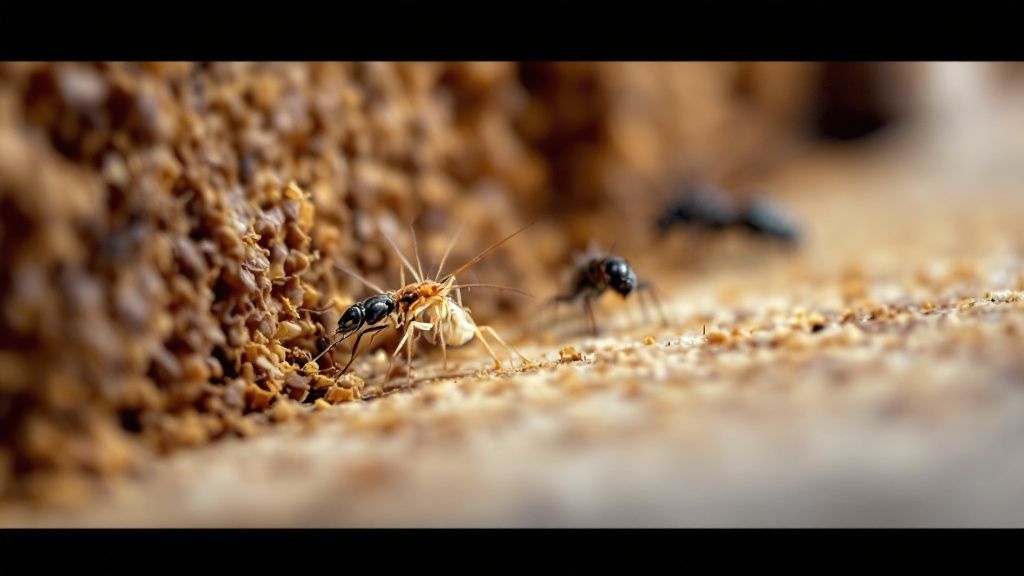
Common Pests Targeted by Resistant Insulation
Common pests often targeted by pest-resistant insulation include rodents, such as mice and rats, as well as insects like ants, termites, and cockroaches. These creatures are notorious for infiltrating homes through small gaps and spaces, causing both structural damage and health risks. With pest-resistant insulation, you can create a less hospitable environment for these unwanted guests, employing materials and designs that deter their entry and nesting.
Insights from entomologist Dr. Susan Jin suggest that modern pest-resistant insulation disrupts the habitats and behaviors of common pests. For instance, treated insulation materials impede the progression of termites, while the dense structure acts as a deterrent to rodents looking for nesting sites. Dr. Jin emphasizes the importance of using these innovative solutions to maintain the structural integrity and safety of your abode, supporting an effective decrease in infestation rates.
Moreover, pest-resistant insulation often includes natural deterrents that repel specific pests. Boric acid, commonly used in insulation, targets ants and cockroaches, reducing their presence. This method reduces the reliance on traditional chemical treatments, aligning with eco-friendly practices. By understanding the targeted pests, you can better choose and appreciate pest-resistant insulation, enhancing the comfort and safety of your home through intelligent design and strategic application.
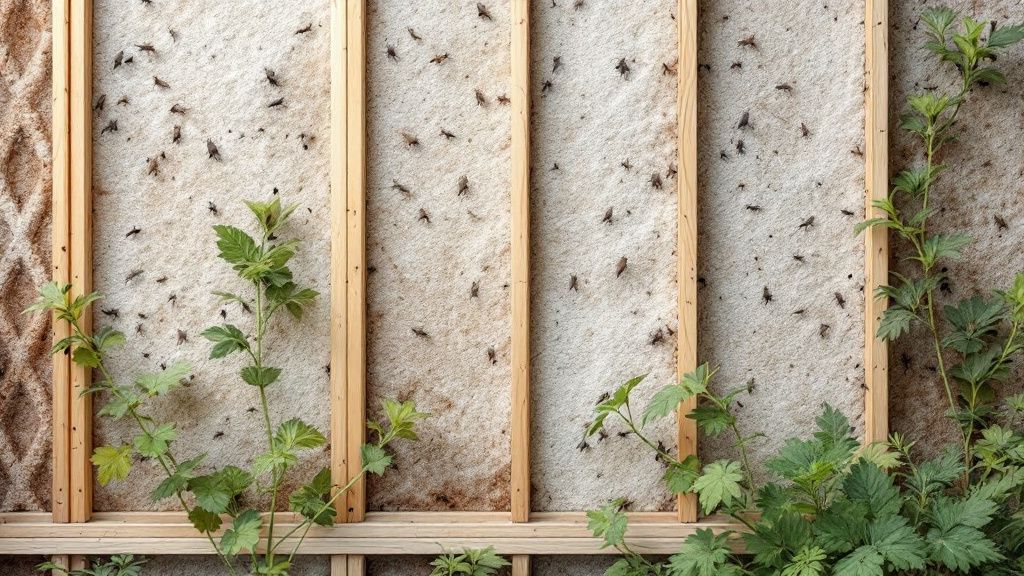
Benefits Beyond Pest Resistance
Pest-resistant insulation offers numerous advantages beyond simply keeping pests at bay. One of the primary benefits is enhanced energy efficiency. By effectively sealing gaps and preventing drafts, this type of insulation helps maintain consistent indoor temperatures. This reduces the strain on heating and cooling systems, leading to lower energy consumption and reduced utility bills, thus providing significant long-term savings for homeowners.
Improved indoor air quality is another significant advantage. According to recent studies, the tight seal of pest-resistant insulation minimizes the infiltration of external pollutants, such as dust and pollen, which can contribute to respiratory issues. By maintaining cleaner air inside your home, you promote a healthier living environment for you and your family.
Acoustic benefits are also worth noting, as pest-resistant insulation helps dampen outdoor noise. This feature is particularly beneficial if you live in a bustling urban area or near busy roads. With a quieter indoor environment, you can enjoy greater peace and relaxation at home, free from constant noise disruptions.
Moreover, the use of biodegradable or sustainable materials in some pest-resistant insulation aligns with eco-friendly building practices. This approach not only minimizes your environmental footprint but also supports the longevity and sustainability of your home. By choosing pest-resistant insulation, you contribute positively to environmental conservation efforts.
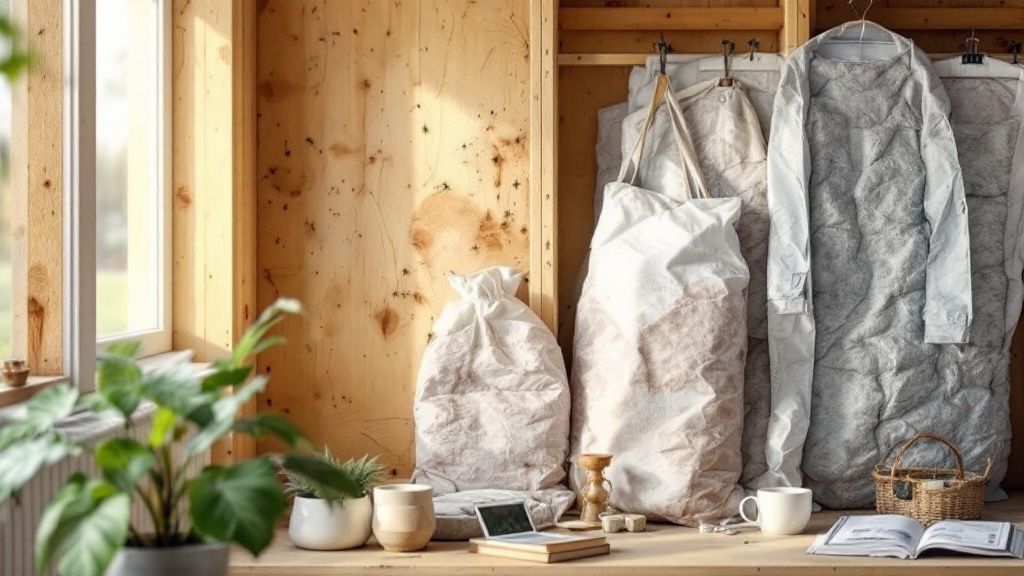
Comparing Costs: Is Pest-Resistant Insulation Worth It?
When comparing costs, pest-resistant insulation often seems more expensive upfront than traditional insulation materials. However, it’s important to consider the cost savings over time. By reducing the need for frequent pest control measures and repairs, this insulation can lead to lower maintenance costs. Additionally, its energy-efficient properties help decrease utility expenses, enhancing its value as a long-term investment.
Calculating the return on investment, the enhanced durability of pest-resistant insulation significantly prolongs its lifespan compared to conventional alternatives. This increased longevity means fewer replacements and installations, which can save both time and money. Homeowners may find that the initial higher cost balances out when considering these long-term financial benefits.
Looking ahead, pest-resistant insulation is expected to evolve through advancements in material technology and environmental initiatives. The development of more affordable and sustainable options could make it increasingly accessible, allowing more homeowners to benefit from its advantages. This progression suggests a promising future for pest-resistant insulation in the home improvement market.
Overall, when you weigh the initial costs against potential savings and benefits, pest-resistant insulation emerges as a worthy consideration. Its financial and practical advantages can make it an invaluable addition to your home, delivering peace of mind and substantial returns over time.
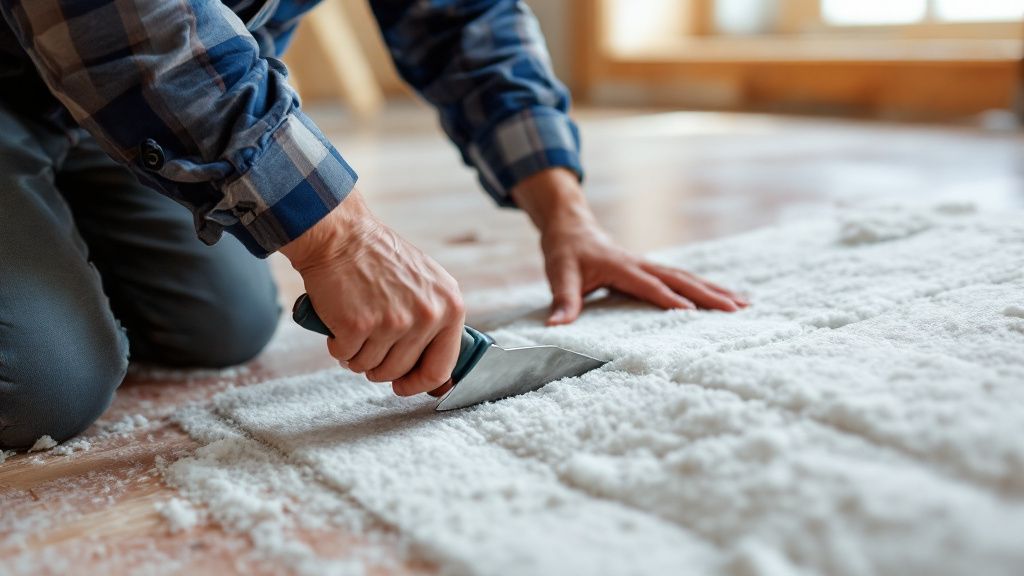
Installation Process and Considerations
The installation process for pest-resistant insulation is crucial for maximizing its effectiveness. Typically, it involves assessing your home’s current state, identifying vulnerable areas where pests may enter, and selecting the appropriate insulation material. Professional installation is often recommended to ensure a proper and thorough application, as this can significantly impact the insulation’s performance and long-term benefits.
Considering the various materials available, each comes with unique benefits and challenges. On one hand, some experts see treated foam as an ideal choice for its pest deterrent qualities and ease of installation. However, others argue that encapsulated insulation offers superior durability and environmental benefits, making it a preferable option for those prioritizing sustainability alongside pest resistance.
The timing of installation should also be considered. It is beneficial to schedule the installation during a suitable season when it can be most effective, often during mild weather to avoid additional challenges. Additionally, discussing maintenance and potential follow-up treatments with professionals helps in understanding the full scope of care needed, ensuring optimal performance of your pest-resistant insulation over the years.
It’s important for you to compare the options carefully, taking into account both immediate benefits and long-term goals. Consulting with professionals who understand the nuances of insulation can guide you towards the best decision for your home’s specific needs.
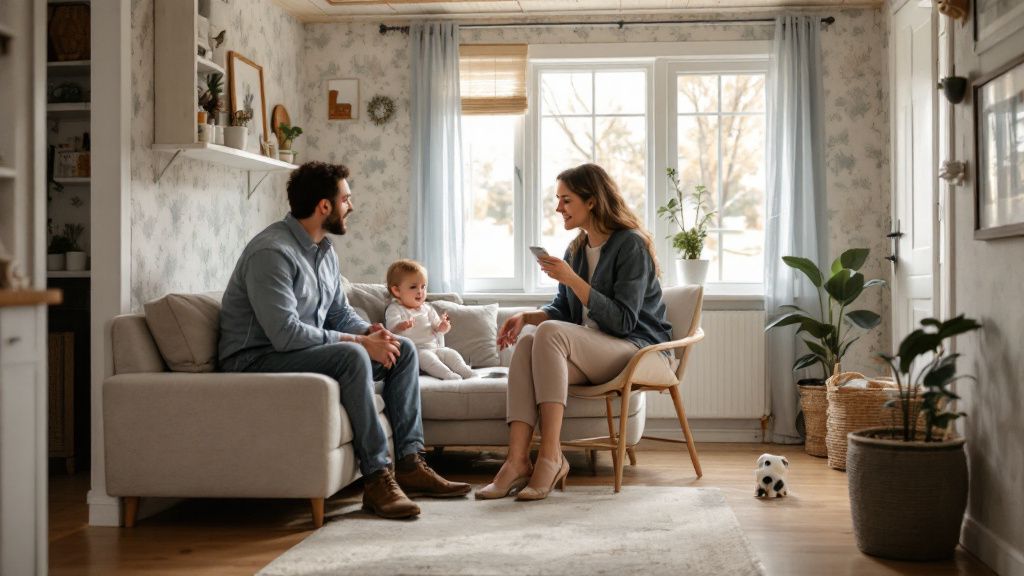
Case Studies: Success Stories from Homeowners
Success stories from homeowners using pest-resistant insulation highlight its transformative benefits. John D., a homeowner in Texas, faced persistent rodent problems in his attic. After installing pest-resistant insulation, he reported a dramatic reduction in rodent activity, coupled with a noticeable improvement in home energy efficiency. His experience underscores the dual benefit of robust pest prevention and utility bill savings, supporting the effective reputation of these insulation solutions.
Another homeowner, Lisa M. from Florida, battled termite damage for years. She opted for encapsulated insulation designed to deter these pests. The result was not only a decrease in termite activity but also enhanced structural integrity, as her home’s foundation issues were subsequently reduced. Her case demonstrates the long-term advantages of investing in pest-resistant insulation, which aligns with her aim to enhance her property’s durability.
In a contrasting situation, Mike R. from California used pest-resistant insulation primarily for its eco-friendly properties. While initially skeptical, he found that it complemented his sustainable lifestyle goals without compromising on pest control effectiveness. Mike’s success story highlights how the right choice of insulation can meet both environmental and functional needs.
One unpopular opinion about pest-resistant insulation is that some homeowners believe traditional insulation paired with ongoing pest control is just as effective. However, case studies often show that integrated pest-resistant solutions provide a more seamless and comprehensive approach. Such cases challenge this perspective by offering tangible evidence of insulation’s multifaceted benefits beyond mere pest resistance.
Each success story underscores the potential of pest-resistant insulation to transform your living space. Whether enhancing energy efficiency, providing structural benefits, or aligning with eco-conscious goals, the experiences of these homeowners reveal how this innovative solution can cater to a range of personal needs and preferences.

